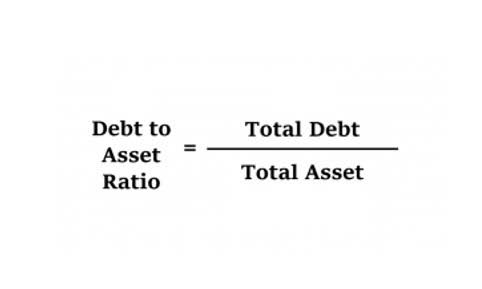However, there are advantages and disadvantages of hiring a professional on a retianer basis. If the company uses a modified cash basis for accounting, retainers count as income as soon as the money comes in, even if the firm still needs to do the promised work. Retainer fees are either an added expense for the client or a strategy to guarantee a continuous income for the service provider.
- When you pay a security retainer, the money goes into a trust or an escrow account (this is sometimes called an IOLTA account, short for “interest on lawyer trust’ account).
- The recruiter should provide regular updates on the progress of the search and consult with the client before moving forward with candidates.
- With a clear fee structure in place, clients can have peace of mind knowing that their lawyer’s services are secured and priorities established.
- It is also enough time, but not too much time, for me to assess whether or not I want to stay on a retainer with them.
- In such matters, instead of hourly billing for professional services, we can offer a fixed, or “flat,” fee to cover all services and costs in the retainer agreement.
Key Elements in a Retainer Agreement
This contra asset account type of arrangement is less common and typically used in special circumstances. In an evergreen retainer, the client pays the retainer down-payment and then replenishes the retainer each month based on the amount of work completed. This type of retainer functions as a safety net of sorts, because the retainer itself is never depleted. At the end of the matter—if the client has been making payments each month—the client will receive the down payment back.
Need help with a Retainer Agreement?
When it comes to business relationships and professional services, the concept of a retainer fee often enters the conversation. Understanding retainer fees is crucial for freelancers, lawyers, and clients seeking specialized assistance. In this blog, we’ll explore retainer fees, their purpose, types, and significance in various professional fields. A legal retainer agreement is a document that specifies you will have an attorney-client relationship after you pay the retainer fee for a specific period. During this time, the contract lawyers might do legal work or be there to answer legal questions you have, like general information purposes.
Retainer agreement
Be sure you are comfortable with your attorney’s fees before hiring a lawyer to represent you. You will not have to pay a retainer if you are hiring a lawyer who charges on a contingent fee basis. A contingent fee arrangement is one where you pay only if you win your case. This fee arrangement is common in personal injury claims, including car accident cases, product liability claims, slip-and-falls, medical malpractice and similar situations. Upfront payment is an expression of trust, and your clients expect you to accurately track the work you’ve done for them.
Retainer Fees are Non-Refundable – Misconceptions of Retainer Fees
It provides them with the financial security to dedicate their efforts exclusively to the client’s needs without any distractions. For marketing and creative agencies, retainer agreements are great for ensuring that both parties have a clear understanding of expectations, rights, and obligations. Plus, they provide important financial protection and help avoid legal issues. Entry fees are typically a flat fee that a client pays to guarantee that the firm will handle their legal needs. Some use it to refer to advanced payments, while others describe the initial payment to begin work.
How Should You Go About Tailoring Your Retainer Fee to Your Specific Situation & Needs?
If you’re ever in need, be it in Bell Gardens or Baldwin Park, knowing that you have a committed Criminal Defense Attorney in Baldwin Park by your side can be your greatest asset. If legal costs exceed your initial retainer, the attorney will often request additional funds or begin billing you directly. Your retainer agreement should specify how such situations are handled and whether they’ll continue working while awaiting additional payment. Maintain open communication with your attorney about budget concerns to prevent surprises.
After the retainer fee is depleted, the attorney may bill the client in several ways. The first option is to enter into a contingency fee agreement with the client. A contingency fee agreement provides that the lawyer does not get paid unless he wins the case. If the case ends in favor of the client, the attorney takes a percentage of the amount awarded by the court.
Understanding Retainer Fees
These results aren’t surprising, as they include ongoing services that require consistent attention and optimization to remain effective. Our team knows how to create plans that guard against lawsuits and creditors. And if you go over the 5 hours, the law firm will send you a bill for the extra amount. These accounts are separate from the day-to-day operating accounts of the law firm. The retaining fee only gets used for lawyer fees and expenses related to your case.
This fee is paid to a professional in return for their reputation and expertise. A “retainer” is a payment that a client makes in advance to an accountant or accounting firm in exchange for retainer fee meaning services that they will provide in the future. It is a good way to ensure the accountant has a steady income stream and gets the accountant’s services for a set amount of time. Generally, retainer fees are not refundable and are accounted for as unearned revenue once they are paid for the services. Upon receiving a retainer, a lawyer is legally and ethically required to deposit the funds into a special bank account, often called a Client Trust Account. This account is separate from the law firm’s business operating account, and the funds within it belong to the client until they are officially earned by the lawyer.
Pay-for-Work
Retainer fees can also be structured in different ways, such as a general gym bookkeeping retainer for ongoing services or a specific retainer for a singular task. This structure allows you to set a budget while ensuring the attorney is compensated for the work they engage in. You should always monitor the balance of your retainer and have discussions with your lawyer about replenishing it if it gets low, to avoid interruptions in service. Multiply your hourly rate, with tax included, by the number of hours required to get your retainer fee. Any other expenses should be added to this number, such as supplies or processing and legal fees. Lawyer retainer fees are considered down payments on the future services of that attorney.










